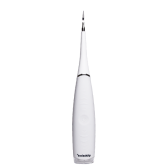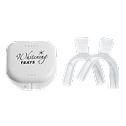Toenail fungus is uncomfortable and unpleasant to deal with, but you’re not alone. In fact, it’s estimated that 40 million Americans have this condition. Here’s how you can use hydrogen peroxide for toenail fungus treatment.
Mix an equal parts solution of distilled water and 3% hydrogen peroxide into a basin. Soak your feet for 10-30 minutes daily until the toenail fungus subsides.
Now that you know the basics, let’s dive into the step-by-step process to recovery from toenail fungus using hydrogen peroxide.
Does Hydrogen Peroxide Kill Toenail Fungus?
Is hydrogen peroxide good for toenail fungus? Does it kill toenail fungus instantly? If you’ve done some research on toenail fungus, then you might be fatigued at the sheer number of home remedies available, leading you to wonder, “Will hydrogen peroxide kill toe fungus?”
Hydrogen peroxide is an oxidizer, bleaching agent, and an antiseptic. It’s used for disinfecting and sanitizing, but more importantly, it has antifungal properties that can be used to treat nail fungus.

When used regularly, hydrogen peroxide can help heal your nails within a couple of weeks or months of use, depending on the severity of the infection. Fungal infections damage the nail and the nailbed, sometimes causing the nail to thicken, become brittle, or separate from the nailbed entirely.
Healing the nail is a lengthy process that can take up to 18 months, but using hydrogen peroxide for nail fungus could help in shortening recovery time.
Although it’s not scientifically verified by clinical trials, regular use can show improvement within weeks or months, depending on how the infection has spread and what strain of fungus is afflicting you.
How Does Hydrogen Peroxide Kill Fungus?
Hydrogen peroxide is an effective over the counter fungus treatment , just like Swissklip Nail Fungus treatment, thanks to two properties. First, hydrogen peroxide reduces moisture, something necessary for fungi to live and function. Second, hydrogen peroxide provides oxygen to the skin, helping other antifungal treatments penetrate more effectively.
In fact, when hydrogen peroxide is applied to the skin, either by cotton ball or soaking, the thicker toenail is softened and becomes more permeable.
How to Use Hydrogen Peroxide for Nail Fungus

To use hydrogen peroxide for toenail fungus, you’ll need the following:
- A bowl, basin, or plastic tub
- 3% hydrogen peroxide
- Tissues or a towel
- Distilled water
It’s important to reiterate that a stronger hydrogen peroxide solution than 3% is not safe for use on skin and can lead to further harm. To get started, mix the hydrogen peroxide and distilled water equally in the plastic tub and soak the nails affected by the fungus in the solution.
Soak anywhere from 10-30 minutes and carefully dry your nails off with a tissue or towel. If you’re just using tissues, do not reuse them and instead discard them right away. Towels can be washed and reused. Make sure you also thoroughly clean the basin when you’re done, too.
Be careful using hydrogen peroxide, since it can irritate your skin, dry it out, and cause it to peel. These responses are all natural, but you may want to consider reducing the frequency of your foot soaks or diluting the concentration if irritation occurs.
Using Hydrogen Peroxide and Vinegar

s you’ll recall, hydrogen peroxide oxygenates your skin, allowing other antifungal treatments to be more effective at treating toenail fungus. As such, combining a treatment course consisting of other at-home remedies can prove to be more effective than exclusively using hydrogen peroxide.
One other useful substance to use is vinegar. Either white vinegar or apple cider vinegar work well, since both are acidic. The acid helps to kill the fungus, reducing the discomfort of the infection and, over the course of treatment, potentially eradicating it.
Of course, you should never mix hydrogen peroxide and vinegar, since doing so can form peracetic acid, a chemical that is extremely harmful to your skin.
Instead, you can apply alternating treatments of peroxide and vinegar, using hydrogen peroxide one day and vinegar the next. Use the same method of mixing, with equal parts solution to distilled water and soaking for anywhere from 10 to 30 minutes.
This solution can help the acid from the vinegar permeate to the heart of the infection more readily, resulting in a faster recovery.
Baking Soda and Hydrogen Peroxide

Another tried and true combo is baking soda and hydrogen peroxide. Baking soda contains antifungal properties that can stop fungi from growing, as well as drying out your skin, creating unfavorable breeding conditions for fungi.
It is also effective at killing some strains of fungi. You can apply baking soda on your feet in the form of a paste, work it into a soak with hydrogen peroxide (1/2 of a cup should do), or sprinkle it in your shoes to help prevent fungi from growing.
Hygiene Habits to Practice While You Recover
It’s important to pair your treatment plan with good podiatric hygiene practices. The following are daily habits you should get into to discourage the onset, spread, or reinfection of toenail fungus:
- Washing and disinfecting your shoes and socks
- Disinfecting your nail clippers using hot water and alcohol
- Keeping your nails clean
- Trimming your nails regularly
- Drying your nails after washing your hands and feet
- Dry your shoes and socks
The baseline goal of these practices is to avoid giving fungi an ideal place to thrive and breed.
The common denominator in nearly all Americans who get toenail fungus is an overabundance of moisture or exposure to unclean surfaces containing fungi.
Final Thoughts

There are a number of ways that hydrogen peroxide for nail fungus can be your ally, but just be aware that this treatment plan can take weeks, even months to eradicate the fungus. If you want a faster way to kill the fungus, laser treatment is an option, but first read this article to know the pros and cons of laser treatment for toenail fungus.
If you’re also dealing with ingrown toenails at the same time, then you might want to consider getting an ingrown toenail trimmer to avoid an ingrown toenail removal.
If your condition continues to worsen, other symptoms manifest, or you are battling reinfection, consult your podiatrist for a medical perspective.
In many cases, however, you’ll be able to wipe out toenail fungus using a solution of hydrogen peroxide.

































